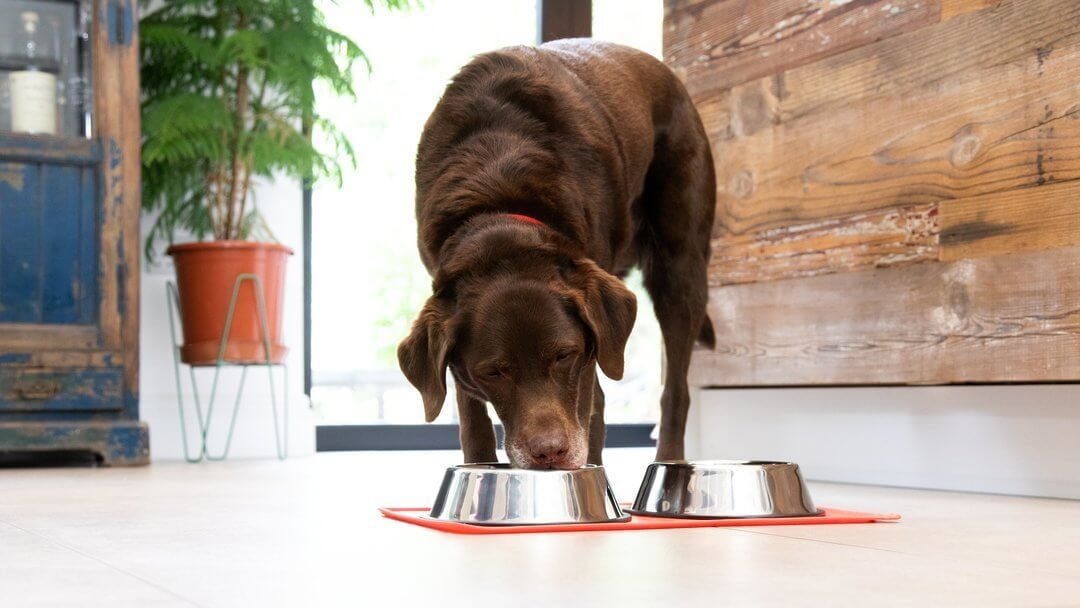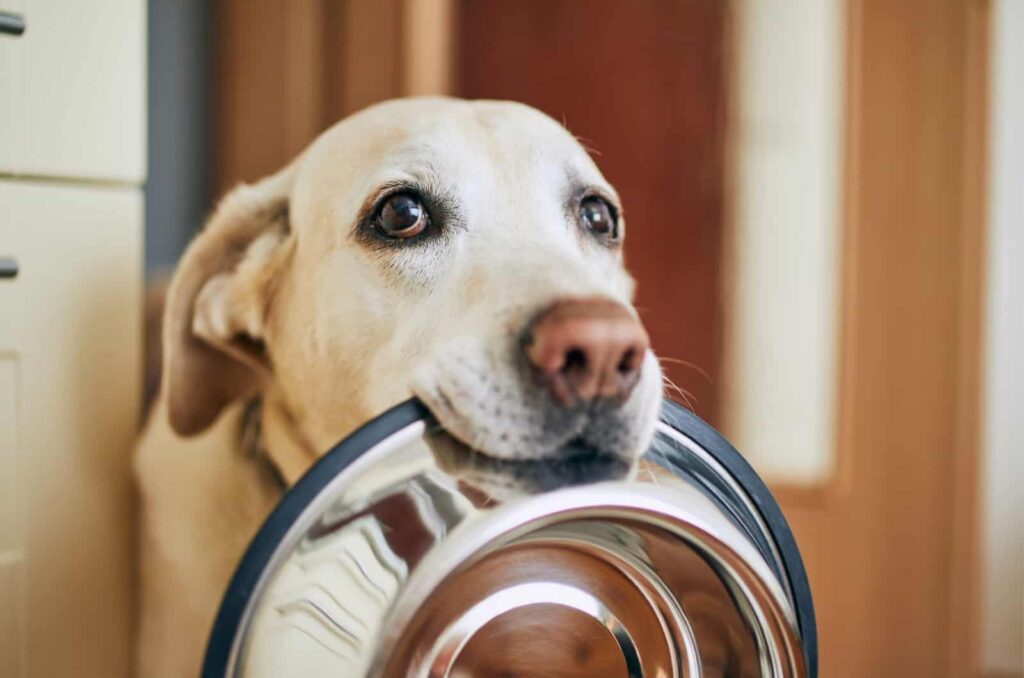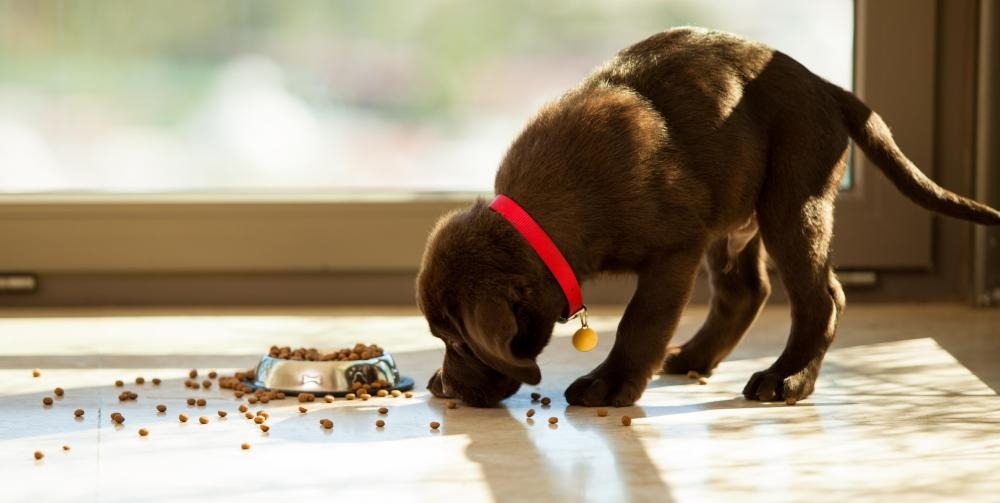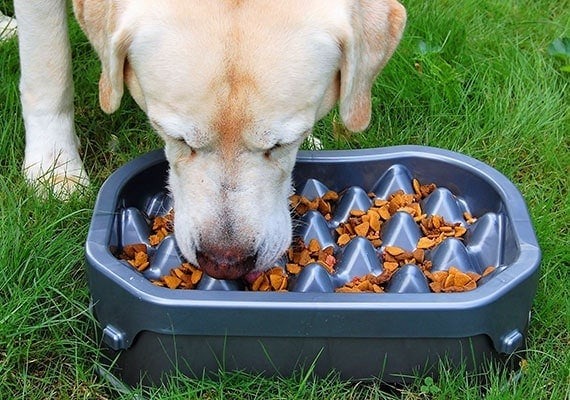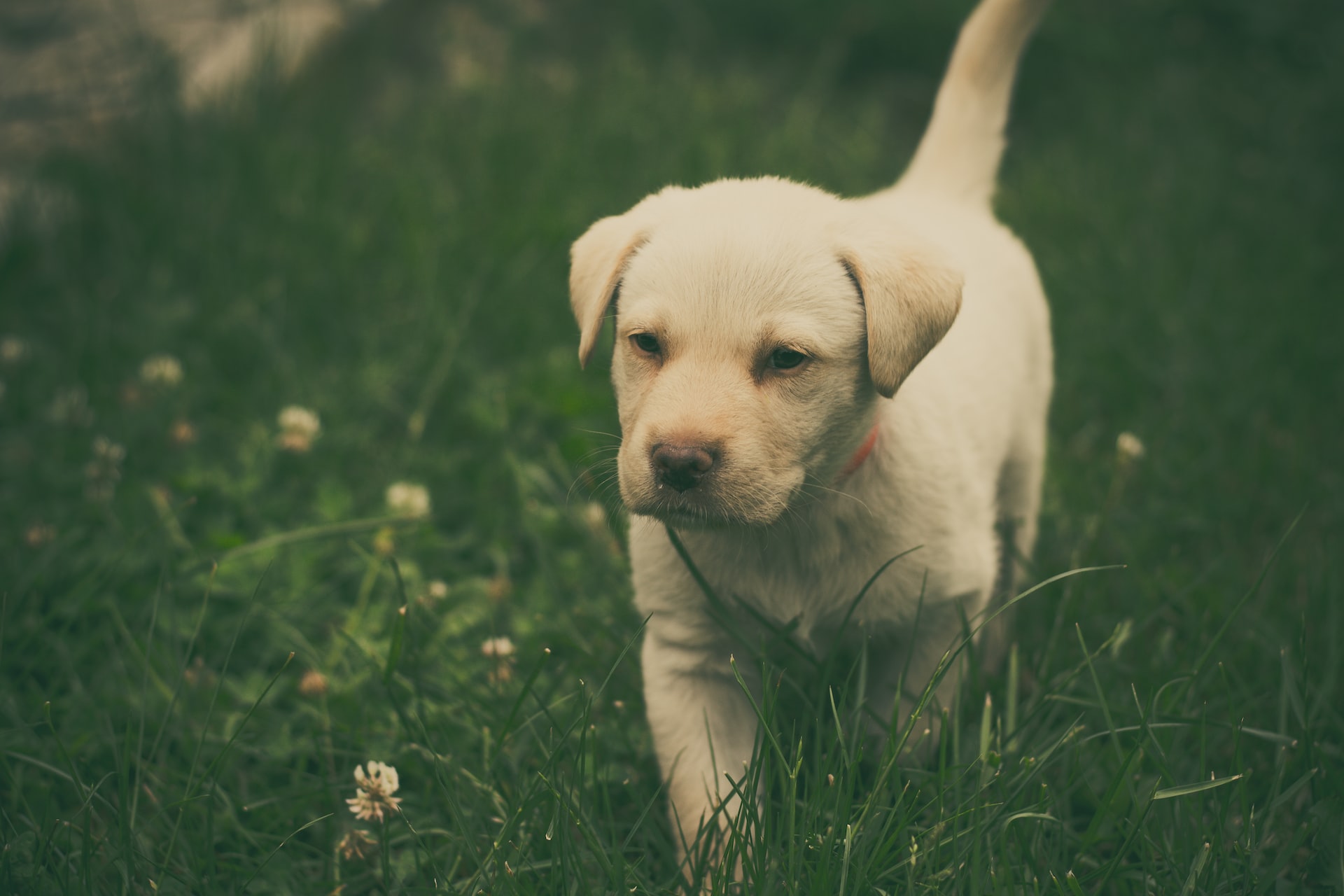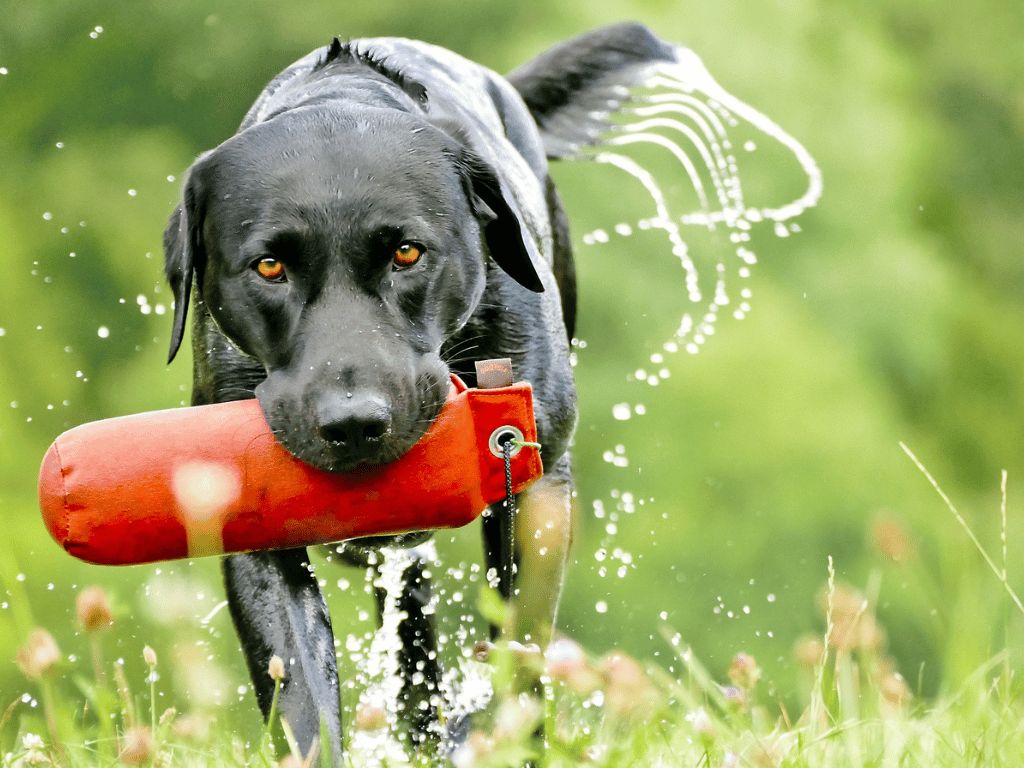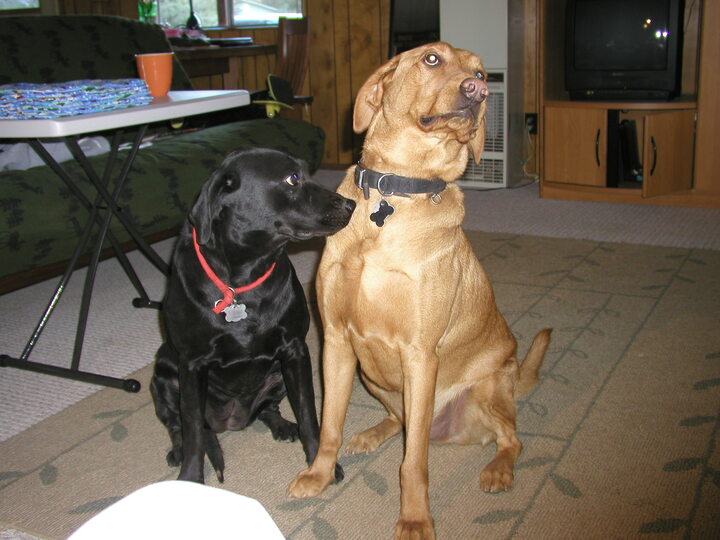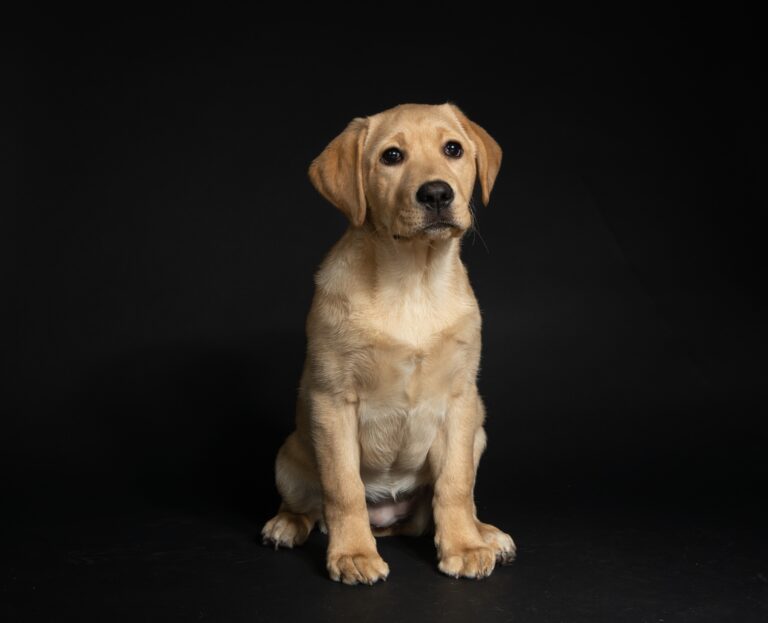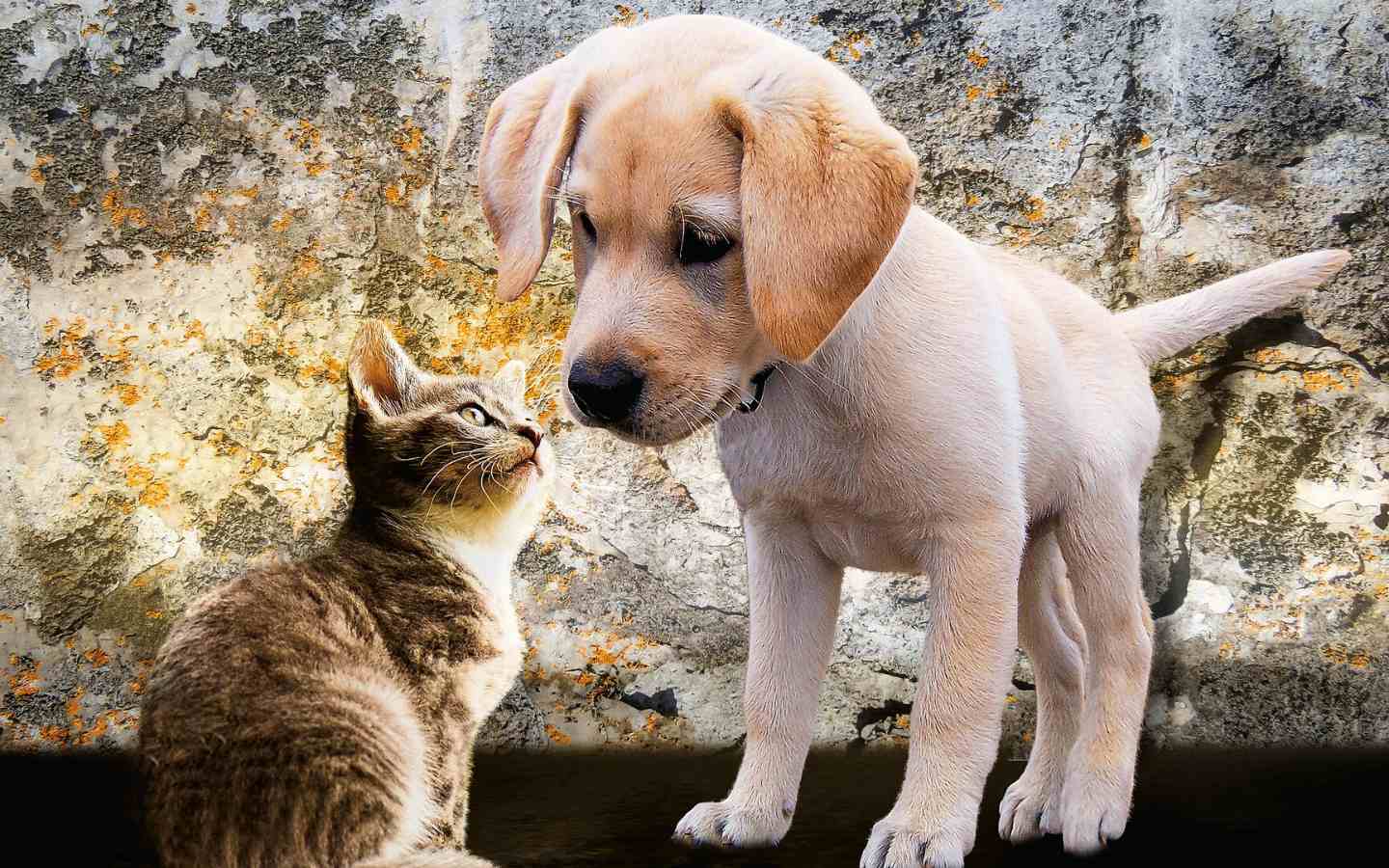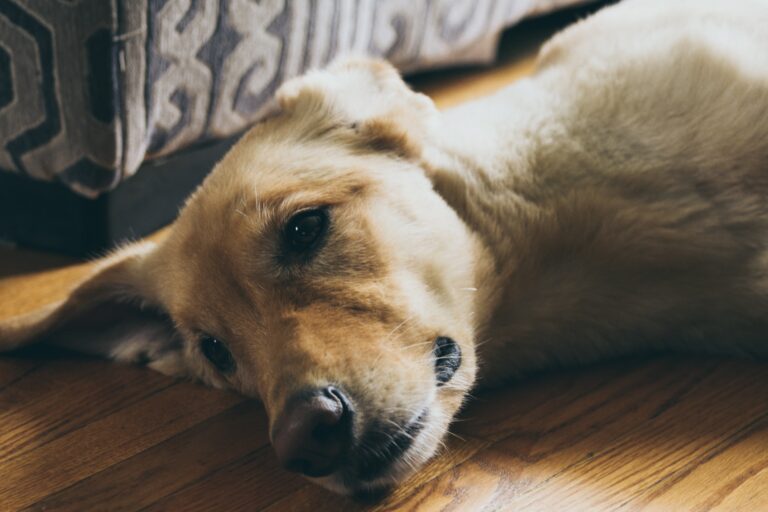Effective Strategies on How to Stop Labrador From Tipping Food Bowl
You’ve just gotten home from a long day at work, and your energetic Labrador greets you at the door, tail wagging enthusiastically. You prepare their favorite meal, carefully measuring the kibble, maybe adding a bit of wet food for good measure. You set the pet bowl down, expecting them to dig in. But instead, with one swift motion of their paw, the bowl tips over, sending food flying across the floor. If this scenario sounds familiar, you probably wonder how to stop Labrador from tipping food bowl.
It’s not just about the mess, though. Understanding why your Labrador tips their food or water bowl is crucial in solving this problem. It could be a sign of boredom, an instinct, or even a health issue. By understanding the root cause, we can tailor our approach to stop this behavior, ensuring that your furry friend’s mealtime is a peaceful and enjoyable experience for both of you.
So, let’s delve into the world of Labradors and their tipped food bowls and explore some effective strategies to keep that bowl upright.
Why Do Labradors Tip Their Food Bowls?
It’s mealtime, and as you watch your Labrador enthusiastically approach their food bowl, you can’t help but wonder, “Why does my dog insist on tipping it over?” Understanding the reasons behind this behavior is key to finding a solution. Let’s delve into one of the most common causes.
✔Exploring Instincts
Labradors are descendants of working dogs who spent their days hunting and retrieving. These tasks required a great deal of exploration and problem-solving. Although your home isn’t exactly wild, these instincts don’t just disappear. Your dog spilling food out of bowl might express these ingrained behaviors.
Think about it. In the wild, dogs must sniff, dig, and sometimes even play with food before eating. It’s not just about finding food. It’s about ensuring it’s safe. Tipping their bowl could be your Labrador’s way of exploring their food, just like their ancestors would have done.
For instance, I once had the pleasure of dog-sitting a three-year-old Labrador Retriever. Every mealtime was like a wild food hunt for him. He would paw at his bowl, tip it over, and scatter the kibble. He would only begin to eat, picking up each piece individually as if he were foraging. It was a clear display of his exploring instincts in action.
Understanding this instinctual behavior is the first step toward managing it. Remember, it’s not about suppressing these instincts but directing them more acceptably.
✔Boredom Strikes
Labradors are high-energy dogs that thrive on physical activity and mental stimulation. When you can’t meet their needs for exercise and engagement, boredom can set in. And a bored Labrador can be mischievous, often resorting to behaviors like tipping over their food bowls just to have something to do.
Imagine you’re at home with nothing to do. You might find yourself mindlessly flipping through TV channels or rearranging furniture just for a change of pace. Similarly, when Labradors don’t have an outlet for their energy, they may resort to activities that we humans might find puzzling, like tipping over their food bowls.
If your Labrador is regularly left alone without toys or activities to keep them occupied, they might be tipping their food bowl out of sheer boredom. Finding ways to keep your dog engaged and active throughout the day could be the key to stopping this behavior. Later in this guide, we’ll discuss some strategies and activities to keep your Labrador entertained and mentally stimulated.
✔Health Concerns
While exploring instincts and boredom are common reasons for Labradors tipping their food bowls, it’s crucial not to overlook the possibility of underlying health issues. Sometimes, changes in behavior, like suddenly tipping their food bowl, can be a sign that your dog isn’t feeling well.
Dental problems are one potential health issue that could lead to this behavior. If your Labrador has a toothache or gum disease, they might tip their food or water bowl and scatter their food to avoid the pain of chewing.
Digestive discomfort could also be a factor. Some dogs might play with food and tip their bowls when nauseous or bloated.
If you notice other symptoms accompanying the bowl tipping, such as loss of appetite, weight loss, changes in stool, or lethargy, you must consult your vet immediately. Remember, it’s always better to rule out health issues before attributing your dog’s behavior to habits or personality traits.
Effects of Food Bowl Tipping
While tipping the food or water bowl might seem quirky, it can have several repercussions. Beyond the immediate inconvenience, there are other potential effects that you might not have considered. Let’s explore some of these in detail.
🥘The Messy Aftermath
One of the most immediate and obvious effects of your Labrador tipping their food bowl is the mess it creates. When your lab scatters the kibble across the floor and smears the wet food on the tiles, it means it’s a cleaning nightmare.
Consider the case of Daisy, a Labrador known for her food-tipping antics. Each mealtime would end with her owner having to sweep and mop the floor, turning what should be a simple routine into a tedious chore. Moreover, leaving it unattended could attract pests and create an unsanitary environment.
🥘Health Risks from Ingesting Non-Food Items or Germs
When your Labrador tips their food bowl and the food scatters on the floor, your dog eat it from there. While this might seem harmless, it could expose them to various health risks.
For instance, they could accidentally ingest non-food items on the floor, like small debris or harmful substances. Eating off the floor can also expose them to germs and bacteria, leading to digestive issues or infections.
Remember Max, the Labrador who loved to scatter his kibble? One day, while enjoying his scattered feast, he accidentally swallowed a small piece of plastic lying on the floor, leading to a scary emergency vet visit.
🥘Wastage of Food: An Unintended Consequence of Bowl Tipping
Food bowl tipping often leads to food wastage. When your Labrador tips their dog bowl, some of the food might end up in unreachable corners or get mixed with dirt, rendering it inedible.
It was a common issue for Bella, the Labrador who used to tip her food or water bowl out of boredom. Large portions of her meals would end up underneath furniture or mixed with dust, leading to a significant amount of wastage over time.
Understanding these potential effects underscores the importance of addressing food bowl tipping. It’s not just about preventing a messy floor but also about ensuring your Labrador’s health and reducing food waste. The next section will explore effective strategies to curb this behavior.
Steps on How to Stop Labrador From Tipping Food Bowl
Now that we’ve explored why your Labrador might be tipping their food bowl and the potential effects, it’s time to address the issue. But where should you start? The answer lies in training. You can teach your Labrador to keep its food bowl right side up with patience, consistency, and positive reinforcement. Here’s how to stop dog from flipping food bowl
🚩Training
Training is a powerful tool for shaping your dog’s behavior. The key is to make the desired behavior more rewarding than the undesired one. In this case, you want to make keeping the food bowl upright more appealing than tipping it over.
Here’s a simple step-by-step guide on how you can do this:
- Start with a controlled environment: Remove distractions that might divert your Labrador’s attention from the training session. You want them to focus solely on their food and their food bowl.
- Use a command: Choose a command like “leave it” or “stay.” Use this command in a calm, firm voice each time you serve your Labrador’s meal.
- Reward good behavior: If your Labrador leaves the bowl upright, reward them immediately with praise, petting, or a small treat. The goal is to make them associate keeping the bowl upright with positive experiences.
- Ignore bad behavior: If your Labrador tips the bowl anyway, don’t scold them. Instead, ignore them. Don’t clean up the mess immediately, and give them no attention. It will help them understand that dog tipping the bowl doesn’t get them any rewards.
- Be patient and consistent: Changing behavior takes time. Be patient with your Labrador and stick to the training routine. Consistency is key to successful training.
🍛Using Heavier Bowls
While training is an effective way to curb your Labrador’s tendency to tip their food bowl, you can also consider making practical changes to their feeding setup. One such change is switching to a heavier bowl that’s harder for your dog to tip over.
Labradors are strong dogs, and a lightweight plastic bowl does not match them. You dog flip it over with a nudge of their nose or a swipe of their paw. That’s where heavier pet bowls come in. Ceramic or stainless steel bowls, especially those with non-slip bases, can be excellent alternatives. Their weight makes them more challenging to tip over, discouraging your Labrador from attempting.
Another option is a specially designed anti-tip bowl. These bowls have a broad, weighted base designed to stay upright, even when your dog tries to tip them.
Remember, while heavier bowls can help discourage bowl tipping, they’re not a guaranteed solution. Pairing this strategy with training for the most effective results is best.
💓Elevated Feeding Stations
Using an elevated feeding station is another practical solution to prevent your Labrador from tipping its food bowl. This setup involves placing the food and water bowls in a stand that raises them off the ground, making it more difficult for your dog to tip them over.
Elevated food stations come with additional benefits beyond just preventing bowl tipping. They can also improve your Labrador’s posture while eating and drinking and can be particularly beneficial for older dogs or those with joint issues.
However, it’s important to note that while elevated feeding stations can be beneficial, they may not be suitable for all dogs. Some studies suggest that they could increase the risk of bloat – a serious condition – in large and deep-chested breeds. Therefore, it’s always best to consult your vet before significantly changing your dog’s feeding setup.
As with heavier bowls, elevated feeding stations should be used with training for the best results. After all, the goal isn’t just to make bowl tipping physically challenging but to teach your Labrador that keeping their food bowl upright is preferable.
🕳Rubber Mats
If you’re still struggling with a food-tipping Labrador despite trying training and heavier bowls, it might be time to bring in some reinforcements: rubber mats. Placing a rubber mat underneath your dog’s bowl can provide stability and prevent the bowl from sliding around, making it harder for your Labrador to tip over.
Rubber mats have a non-slip surface that grips onto the bowl, keeping it in place even when your dog nudges or paws. They also come with the added benefit of containing any mess if your dog does manage to tip their bowl, making cleanup easier.
It’s important to note, though, that while rubber mats can help deter food bowl tipping, you should use them as part of a comprehensive approach that includes training. Also, ensure the mat is easy to clean and doesn’t become a breeding ground for bacteria.
🔘Slow-feed Bowls
If your Labrador’s food bowl tipping includes rapid eating, a slow-feed bowl might be just what you need. These specially designed bowls feature ridges or mazes that your dog has to navigate to get to their food, slowing their eating pace and making it more challenging to tip the bowl over.
Slow-feed bowls discourage food bowl tipping and promote healthier eating habits. Eating too quickly can lead to digestive issues in dogs, including bloating and indigestion. By slowing down your Labrador’s eating pace, these bowls can help prevent such problems.
However, it’s important to introduce a slow-feed bowl gradually to ensure your Labrador adjusts to the new eating pace. Start using it for one meal daily, and monitor your dog to see how they respond. Some dogs might get frustrated initially, but with patience and positive reinforcement, they can learn to eat from these bowls without issue.
Like other solutions, slow-feed bowls are most effective with consistent training. Combining practical changes with positive reinforcement can help curb your Labrador’s bowl-tipping habit while promoting healthier eating habits.
Other Preventive Measures
While training, heavier bowls, elevated feeding stations, rubber mats, and slow-feed bowls can all help curb your Labrador’s bowl-tipping habit, there are other preventive measures you can consider. These additional solutions might be just what you need to stop the tipping once and for all. Let’s delve into some of these options.
📌Using a No-Tip Bowl
As the name suggests, no-tip bowls are dog bowls that cannot be tipped over like Yeti Boomer dog bowl. They typically feature a wide, non-slip base and sloping sides, making it difficult for your dog to grip the rim and flip the bowl.
Remember that no-tip bowls can be highly effective, but they’re not a one-size-fits-all solution. Some dogs might still manage to tip them, especially if they’re determined or particularly strong. Hence, using no-tip bowls in conjunction with training is best for the most effective results.
📌Gluing the Bowl to a Large Mat
If your Labrador is particularly persistent in their bowl-tipping endeavors, you might consider a more extreme measure: gluing the bowl to a large mat. This method combines the stability of a rubber mat with the permanence of glue, creating a setup that’s challenging even for the most determined bowl-tipper.
However, remember that this method should be a last resort. Gluing the bowl to a mat makes cleaning more difficult, as you’ll have to clean the mat each time you clean the bowl. It’s also a more permanent solution, so it’s less flexible if you need to move the feeding location or switch bowls.
📌Making Food More Appealing
If your Labrador is tipping their bowl because they’re not interested in their food, perhaps it’s time to make their meals more appealing. Dogs, like humans, enjoy a variety of tastes and textures, and introducing these into your pet’s diet might be just what you need to keep their attention on eating rather than playing with their bowls.
You could try adding a bit of wet food to their dry kibble or mix in some cooked vegetables or lean meat. Consider rotating between different flavors or brands to provide variety if you’re using commercial dog food.
For example, Max, the Labrador who loved to play with his food, showed significantly less interest in his bowl when his owner began mixing a spoonful of wet food into his dry kibble. The new taste and texture made mealtime more exciting for Max, and he started focusing more on eating his food rather than tipping his bowl.
However, gradually introduce new foods to avoid upsetting your Labrador’s stomach. And always consult with your vet before making significant changes to your dog’s diet to ensure they’re getting the necessary nutrients.
📌Checking with the Food Company
Sometimes, despite your best efforts, your Labrador might continue to tip their bowl. In such cases, it might be worth contacting the company that makes your dog’s food. They may have encountered similar issues with other customers and could offer solutions or suggestions tailored to their product.
Remember, while the food company’s advice can be helpful, it’s still essential to consult your vet before making any major changes to your dog’s diet or feeding habits. They can provide guidance based on your Labrador’s specific health needs and dietary requirements.
When to Seek Professional Help
While you can manage most instances of food bowl tipping with patience, training, and some practical changes to your dog’s feeding setup, there are cases when professional help might be necessary. If your Labrador continues to tip their bowl despite your best efforts, or if you suspect underlying health issues, it’s time to consult the experts.
Let’s discuss how to identify when professional intervention might be needed.
Spotting the Red Flags
Despite consistent training and various preventive measures, persistent food bowl tipping could indicate a deeper issue. It might be a sign that your Labrador is not satisfied with their diet, or it could be a symptom of a health problem.
For example, Bella’s owner noticed that despite trying everything from heavier bowls to rubber mats, Bella continued to tip her bowl. She also observed that Bella was losing weight and seemed less energetic. Concerned, she decided to consult a vet. The vet discovered that Bella had a dental issue that made eating painful, leading to her playing with her food instead of eating it. Once you address this issue, Bella’s food-tipping habit decreased significantly.
Similarly, if your Labrador starts tipping their bowl suddenly after years of eating without issue, it might be worth consulting a vet. This sudden behavior change could indicate discomfort or pain while eating.
In some cases, behavioral issues could be at play. If your Labrador seems to tip their bowl out of anxiety or compulsion, it might be worth consulting a professional dog trainer or a veterinary behaviorist. They can provide tailored strategies and techniques to address the root cause of the behavior.
Frequently Asked Questions
Q: How do I get my dog to stop eating the bowl?
A: If you’re a dog owner, you know that they can be pretty curious creatures. However, this curiosity can sometimes lead to them getting into things they shouldn’t, like their food bowl. One solution is to try using a slow feeder bowl. These bowls have ridges and shapes that force your dog to eat slower, and they can’t inhale their food as quickly. Another option is to try a different feeding method, such as giving your pup its food on a raised platform rather than a traditional bowl on the ground. While finding the right solution may take trial and error, remember that your dog’s health and safety always come first.
Q: How do I get my lab to eat slower?
A: Are you tired of endless meal times with your lab gobbling down their food in just a few seconds? Perhaps you’ve noticed the undesirable effects of eating too quickly, from vomiting to choking or even dangerous bloat. Regardless of the reasons, addressing this behavior as soon as possible is important. You can encourage your dog to pace themselves while eating by using puzzles or slow feeders to splitting meals into smaller portions and add moisture to dry food. You may also consider training exercises that teach your lab to relax and stay calm around food.
Q: How do I stop food bowl aggression?
A: As a responsible pet owner, it’s important to address any aggressive behavior your furry friend may have, including food bowl aggression. One strategy is to feed your pet separately from other animals in your household to avoid conflicts during mealtime. You can also gradually desensitize your pet by standing near the bowl while they eat and rewarding them with treats or praise. Avoid punishing or scolding your pet, increasing their anxiety and leading to more aggressive behavior. Consulting with a veterinarian or animal behaviorist may also help develop a personalized plan to address food bowl aggression in your pet.
Final Words
Navigating the Labrador food bowl tipping world can feel daunting, but remember, you’re not alone in this journey. Many pet owners have faced and successfully tackled this issue. It’s important to address this behavior not just for the sake of your sanity and a cleaner floor but also for your beloved Labrador’s health and well-being.
From practical solutions like using no-tip bowls, rubber mats, and slow-feed bowls to behavioral strategies such as making food more appealing and consistent training, numerous ways exist to help curb your dog’s food-tipping habit. Remember, however, that what works best will depend on your Labrador’s specific needs and personality.
If the problem persists or if you suspect underlying health issues, don’t hesitate to seek professional help. Your vet, dog trainer, or even the company that makes your dog’s food can provide valuable guidance and support.
We hope this guide has been helpful and has provided you with some practical strategies to tackle your Labrador’s bowl-tipping habit. We’d love to hear about your experiences and any tips you might have, so please leave a comment. Each shared experience enriches our pet owner community and could be the exact advice another owner needs.

